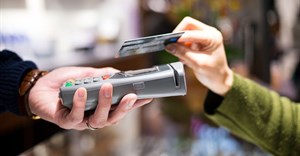Trending
Elections 2024
Jobs
- Orchards Partner Gauteng
- Call Centre Manager - Debt Collection Stellenbosch
Dangerous coffee

But where does one begin to understand one's obligations as a supplier of goods and what can be done to mitigate potential exposure to liability? This article begins the exploration into these issues in the context of consumer rights gaining increasing traction under Consumer Protection legislation in South Africa.
As the Consumer Protection Act No. 68 of 2008 ("CPA") settles into South African jurisprudence and consumers become more familiar with their rights, and to a degree, their obligations, news emerges from California about litigation instituted by one Paulette Carr, against McDonald's in respect of injuries Ms Carr sustained as a result of purchasing coffee through a McDonald's drive-through restaurant in Van Nuys in Los Angeles.
Dealing with hot coffee
In an article published in the Los Angeles Times on 9 January 2014, the Los Angeles Times reports as follows: "'The lid for the hot coffee was negligently, carelessly and improperly placed on the coffee cup... resulting in the lid coming off the top of the coffee at the window causing the hot coffee to spill onto the plaintiff,' Carr said in the lawsuit."
This is the second time that litigation has dealt with hot coffee. The first, and widely publicised case, occurred in 1994 in the United States. That case resulted in a settlement between the plaintiff and McDonald's in an undisclosed amount.
But what of the situation in South Africa under the CPA regime? Under the CPA, more particularly, section 61, consumers are provided with certain inalienable rights in respect of harm caused to them by consumer goods. Section 61(5) prescribes the types of harm that will give rise to a competent claim by a consumer against the supplier of goods. Section 61(5) provides that:
"Harm for which a person may be held liable in terms of this section includes -
(a) the death of, or injury to, any natural person;
(b) an illness of any natural person;
(c) any loss of, or physical damage to, any property, irrespective of whether it is moveable or immovable; and
(d) any economic loss that results from harm contemplated in paragraph (a), (b) or (c)."
Section 61(5) is arguably very broad and empowers consumers to choose to complain, and possibly litigate, in respect of damage caused to them by goods. However, the inquiry is not simply one of whether harm occurred. Section 61 sets out a far more intricate matrix requiring consumers to determine and assess the circumstances in which they find themselves and where the harm occurred as a result of consumer goods. Section 61(4) provides certain limitations on the liability of suppliers of goods. These exemptions must be considered carefully in relation to the harm suffered by the consumer.
Section 61(4) creates the following exemptions:
- where a particular unsafe product characteristic, failure, defect or hazard (collectively referred to as "the defect") is "wholly attributable" to compliance by the supplier with public regulation;
- the defect did not exist in the goods at the time that they were supplied to the defendant "to another person alleged to be liable";
- the defect was attributable or arose due to compliance by the defendant with instructions provided by the person supplying the goods to the defendant;
- it would have been unreasonable to expect the supplier to have discovered the defect "having regard to that person's role in marketing the goods to consumers";
- prescription.
In addition to the exemptions, the overall principle of liability, which is set out in section 61(1) of the CPA, states that a supplier will be liable for failures, defects or hazards in any goods where inadequate instructions or warnings are provided to the consumer in respect of the existence of any such possible failures and hazards. This gives rise to strict liability on a supplier's behalf.
Section 61 must be read together with the specific and express definitions provided for in section 53, dealing with the terms "defect", "failure", "hazard" and "unsafe".
With reference to Ms Carr's proposed lawsuit in California, one may battle to argue in South African law that the temperature of the coffee constitutes a defect or a failure in the goods. One would therefore have to concentrate, perhaps, on the definitions of "hazard" and "unsafe" and test whether or not Ms Carr's litigation would be successful in a South African context. The definition of "hazard", which is defined in section 53(1)(c), is as follows:
"A characteristic that -
1. has been identified as, or declared to be, a hazard in terms of any other law; or
2. presents a significant risk of personal injury to any person, or damage to property, when the goods are utilised."
Similarly, the definition of "unsafe", which is set out in section 53(1)(d), is "that, due to a characteristic, failure, defect or hazard, particular goods present an extreme risk of personal injury or property damage to the consumer or to other persons." The difficulty with the aforementioned definition is the existence for the word "extreme" which, arguably, elevates the threshold required by the definition to a very high level and, perhaps, one that may be difficult for a consumer to prove in court. Similarly, the requirement that a hazard constitutes "a significant risk of personal injury" does leave one with the question of what "significant risk", as opposed to ordinary risk, is for purposes of successfully establishing a supplier's liability.
In the context of hot coffee, one may be able to argue that the temperature of the coffee constitutes either a significant risk or an extreme risk of personal injury but does one then define that risk with reference to the nature of the risk, or the degree of the injury? Common sense would have to play a role. That being said, the reasonable consumer appears only to feature in the definition of the term "defects". In addition, steps taken by suppliers of certain goods to warn consumers of potential defects or risks, whether extreme or not, may operate to mitigate a supplier's exposure to litigation. Perhaps Ms Carr would argue that extremely hot coffee constitutes a defect in the product; alternatively, the failure of an employee to fix a lid onto a takeaway coffee cup constitutes behaviour that is negligent, thus rendering the product unsafe once prepared and handed to the consumer.
Much is still to be learnt in terms of the CPA and understanding its scope and ambit in the context of injuries to consumers as a result of exposure by consumers to certain goods and particular services. Part H of Chapter 2 of the CPA, which contains the provisions dealing with a supplier's liability to a consumer, contains numerous references to terms that are not defined in the CPA and with which one will have to grapple in order properly to understand the extent of a supplier's liability in circumstances where something as simple as a hot drink lands in the lap of a consumer. We will eagerly follow the litigation in California, which may indeed, be instructive as to consumer rights in general and a supplier's obligations to warn consumers of potential defects in products at the time of a transaction.
















